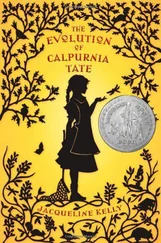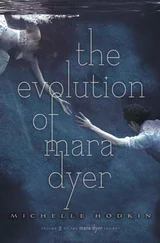I watched Sesame Street ritualistically every morning before Lydia took me to the lab. It began my day, providing a transition period from my dream state to my wakeful consciousness. If I got up before Lydia did I would report first to the television, to check in on the Muppet-populated universe of Sesame Street . In Sesame Street , as in much children’s entertainment, it is seen as perfectly natural that human beings should freely verbally communicate with nonhuman creatures.
Often, if I happened to rise early enough, I caught a show that preceded Sesame Street on weekdays, called Francis the Gnome . This was an animated series about a gnome named Francis who lived with his matronly gnome wife in a rustic home fashioned from the hollow of a tree in what appeared to be a temperate pine forest somewhere in North America. Francis wore a pointed green hat and a long white beard with a Tolstoyan fork. Francis served as doctor to the animals of the forest. He did good deeds for woodland animals in trouble: releasing them from hunters’ traps, nursing them back to health when they took sick. Francis was at home in nature. He too communed with the animals.
So I would watch cartoons on TV early in the morning before Lydia got up, licking a nine-volt battery over and over and over.
Lydia also provided me with lots of puffy colorful plastic cases containing videotapes of animated films for me to watch. I appreciated all the Disney films, like Snow White and the Seven Dwarves, Cinderella, The Sword in the Stone and Robin Hood —but obviously, as it touched on certain core thematic elements of my life, my favorite by far was Pinocchio . The literary characters with whom I most strongly identify are Caliban, Woyzeck, Milton’s Satan, and Pinocchio. Pinocchio is perhaps the most important of these. Even at the time I may have associated Lydia with the beautiful blue fairy who floats in through Geppetto’s window to bestow consciousness upon the puppet with a touch of her magic wand.

Before I get too far ahead of myself, I should tell you an anecdote that begins with strange screams that I heard in my dreams at night. I don’t remember how soon it was after I began living with Lydia that I started having these dreams. They usually happened right before I woke up in the morning. I would be lying asleep in my bed, dreaming away on pleasant topics, when suddenly I would begin to hear screams, and my dreams would get bent into nightmares. I would hear these half-human noises — bursts of bloody-throated, high-pitched screaming. I dreamed of a prison, a torture garden where both people and animals wandered the grounds — or crawled along the floor, or were chained naked to posts — while guards marched up and down the halls of the castle (sometimes it was a castle), selecting the people or animals to be brought below to some place that was underground, for tortures or cruel scientific experiments. The guards wore uniforms: some of them wore crisp, fascistic brown uniforms with gold buttons, like the zookeepers would wear, and others wore the uniforms of scientists — flowing white coats — and carried clipboards. A scientist would point out one of the people, and the zookeeper would yank at the chain the person wore around his neck, and with a whip drive the person four-legged down a cold stone staircase. Soon we on the surface would hear his screams, rising up from the vents in the floor. The screaming would grow louder, more painful and terrifying, until I woke up, and it was morning. This dream would recur with slight variations. What’s interesting about this dream is that it might have been the first dream in my life that I remembered any of at all. Before, in an alexic universe, all my dreams had bled right out of my brain only seconds after waking, but by this time I had learned enough language to begin to capture and keep my dreams.
I discovered the source of these dark dreams when Lydia and I met Griph Morgan. I do not know exactly how long Lydia had lived in that apartment before my arrival, but apparently she had never met Griph, her reclusive upstairs neighbor, until we bumped into him on the stoop of the building one afternoon when we happened to arrive home at the same time. Lydia and I had come home from the lab several hours earlier than usual that day for some reason — perhaps that was why she had never crossed paths with him before; Griph’s and Lydia’s schedules had never chanced to align. He was struggling with his keys in the door to the building when we came up the stairs. Griph Morgan was not very old, but he was in poor health. He was missing one leg (he was a veteran) and walked with a cane. He had one normal leg (though a little on the pale and flabby side) and the other one was a thin metal prosthesis, which culminated unsettlingly in a fake foot inside a sneaker; but what made this doubly unsettling was that one of the many points of pride Mr. Morgan took in his Scottish heritage was the tartan kilt he usually wore, a pleated green-and-red plaid skirt, decoratively completed by a broad black belt and a rabbit-pelt sporran. Additionally, Mr. Morgan played the bagpipes, which that afternoon he had slung over his shoulder, as he was returning home from practicing in the park. To me Mr. Morgan’s bagpipes looked less like a musical instrument than a creature from another planet: a glossy black velvet bag for a body, from the top of which protruded a series of segmented stalks that looked like they could be sensory organs, and a long infundibuliform tube coming out the front of it that could have been some sort of silly nose. Lydia introduced herself and me, and he gruffly told us his name. Lydia began talking to him in the hallway of the building, though Mr. Morgan had already begun his slow clumping three-legged ascent of the stairs. First she asked him a neighborly question having to do with recycling. The question seemed to be a bit of a conversational ruse, Lydia’s real curiosity being more about her previously unseen Caledophilic upstairs neighbor than about what exactly the building’s protocol for disposing of glass and aluminum was. Mr. Morgan — who sported an interesting style of facial hair that he called a Vandyke — was characteristically laconic.
“I don’t drink anymore,” was all he said.
“But what about cans—?” Lydia must have asked, provoking a dismissive snort from beneath the mustaches of Mr. Morgan’s Vandyke before he replied that he purchased all his beans wholesale in bags and boiled them himself.
“You don’t boil your beans?” he said.
“Well—” Lydia seemed slightly confused by the question.
Like any Scotsman, Mr. Morgan was proud of his resourcefulness and frugality. He took a mild interest in me but did not seem particularly surprised that his downstairs neighbor shared her apartment with a chimp, and casually made mention of the fact that he himself cohabited peacefully with ten parrots.
“Do they talk?” Lydia asked with excitement.
“Of course they talk,” said Mr. Morgan, as if he was offended that she need even have asked. Then Lydia asked to see them, and then we were all upstairs in Griph Morgan’s apartment, which was (one) less than half the size of ours, (two) situated directly above my (Bruno’s) bedroom, (three) cluttered with old newspapers stacked to the ceiling (which Mr. Morgan clearly had no intention of recycling anytime soon), and (four) did indeed have a whole flock of parrots in it, flapping and squawking and crawling all over everything in the room. There was a big pot of beans boiling busily on the stove. Half the floor space of the living room was taken up by a huge wire birdcage, the door of which was open to allow free passage for the ten parrots. There was a tiny old TV with a twisted coat hanger for an antenna, a foldout card table, a side table, and a shabby brown easy chair facing the TV. The room had no other furnishings. The chair had been sat in so many times and so often that Mr. Morgan had carved a depression in the seat and the back that was shaped like his body, such that the negative space formed a phantomlike impression of Mr. Morgan sitting in the chair in the event of his absence. Mr. Morgan inserted his form into the Mr. Morgan — shaped crater in the easy chair, and Lydia and I sat on two of the shorter stacks of newspapers. The room was tropically dank and steamy, smelling of the combined effects of the potful of boiling beans and the parrots. Lydia would later confide in me that in her opinion Mr. Morgan’s apartment “stank,” and that she was glad she had finally discovered the source of “that weird smell in the building.” I, however, actually kind of liked the smell. Mr. Morgan’s apartment had a not-unpleasant soporific effect on me; I found its biotic pungency oddly cozy. In fits and starts of attempted conversation Lydia managed to extract from Mr. Morgan that the two things he lived for were his parrots and his bagpipes. As for the latter, he was the lead bagpiper in the Veteran’s Association of Chicago & North Western Railway Bagpipe Band. When they played in parades, he would play his bagpipes from a wheelchair, which was pushed at the head of the formation by a tartan-clad volunteer. As for the former, Griph Morgan’s parrots consisted of three African greys, two macaws, two red-billed Pionuses, one blue-crowned racket-tail, one cockatiel and one Senegalese yellow-vented. All of Mr. Morgan’s parrots enjoyed free range of his small apartment. He considered these birds his friends and roommates more than his pets.
Читать дальше













